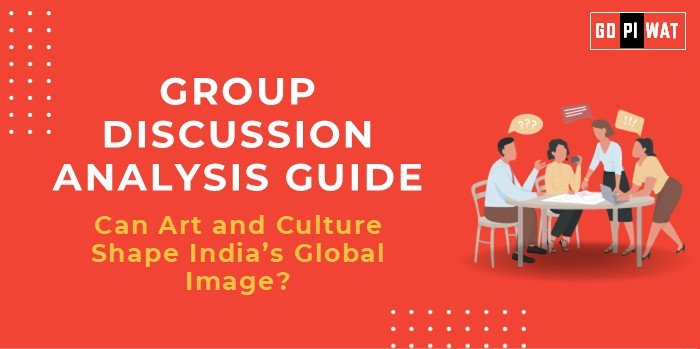🗨️ Group Discussion Analysis Guide
🎨 Can Art and Culture Shape India’s Global Image?
🌟 Introduction to the Topic
Art and culture are powerful tools for a nation’s soft power, influencing global perceptions and creating diplomatic bridges. For India, with its diverse cultural heritage and contemporary artistic expressions, the potential to craft a compelling global narrative is immense.
Background: India’s cultural diplomacy dates back to initiatives like the ICCR (Indian Council for Cultural Relations), established in 1950. More recently, events such as the International Day of Yoga and Bollywood’s global appeal have showcased India’s cultural vibrancy on the world stage.
📊 Quick Facts and Key Statistics
- 🕍 UNESCO Sites: 40 World Heritage Sites showcasing India’s rich history and architectural prowess.
- 🎥 Bollywood Influence: Annual global box office revenue exceeds $2 billion, spreading Indian stories worldwide.
- 🧵 Cultural Exports: Handicrafts contribute $3.5 billion to exports (2023), blending artistry with economic value.
- 🌏 Tourism: Cultural tourism accounts for 30% of India’s $234 billion tourism revenue (2022).
👥 Stakeholders and Their Roles
- Government Agencies: Promote art through events like Bharat Parv and international fairs.
- Artists and Cultural Institutions: Shape narratives through film, dance, music, and literature.
- Private Sector: Brands like FabIndia promote Indian culture globally through design and aesthetics.
- International Organizations: UNESCO and ICCR enhance cultural exchanges.
📈 Achievements and Challenges
✅ Achievements:
- Soft Power Growth: Yoga and Bollywood resonate globally, fostering cultural diplomacy.
- Economic Contribution: Arts and crafts industries sustain 11 million artisans and craftsmen.
- Tourism Impact: Destinations like Rajasthan attract millions annually for their cultural heritage.
⚠️ Challenges:
- Underfunding: India’s cultural budget is only 0.1% of GDP, lagging behind countries like France (1.1%).
- Representation Issues: Rural artisans often lack platforms for international exposure.
- Cultural Homogenization: Globalization risks overshadowing indigenous art forms.
🌏 Global Comparisons
- South Korea: The “K-Wave” transformed cultural exports like K-pop and K-dramas into global phenomena.
- Italy: Leveraging UNESCO sites to enhance its global cultural image.
📜 Structured Arguments for Discussion
- Supporting Stance: “India’s rich cultural heritage makes it uniquely positioned to craft a compelling global identity.”
- Opposing Stance: “Without proper funding and representation, India risks losing its cultural authenticity on the global stage.”
- Balanced Perspective: “India’s art and culture hold immense potential, but structural support and modernization are crucial.”
🚀 Effective Discussion Approaches
- Opening Strategies:
- Cultural Highlight: “India’s 40 UNESCO sites are not just landmarks but storytellers of a civilization spanning millennia.”
- Statistical Lens: “Cultural tourism contributes 30% to India’s tourism revenue, a testament to its global appeal.”
- Counter-Argument Handling:
- Challenge: “India’s cultural exports lag behind nations like South Korea.”
- Rebuttal: “India’s diversity offers unparalleled storytelling potential, adaptable to various global contexts.”
🔍 Strategic Analysis (SWOT)
- Strengths: Rich heritage, diverse artistic forms, established global recognition (e.g., Bollywood).
- Weaknesses: Limited funding, lack of cohesive cultural branding.
- Opportunities: Cultural tourism, digital art platforms, collaborations with global brands.
- Threats: Cultural commodification, global competition from nations like South Korea.
📚 Connecting with B-School Applications
- Real-World Applications: Cultural branding strategies for international business expansion.
- Sample Interview Questions:
- “How can India leverage its cultural heritage to boost global trade?”
- “Discuss the role of Bollywood in shaping India’s global perception.”
- Insights for B-School Students:
- Explore cross-sector collaborations (e.g., art and tech).
- Analyze case studies of cultural branding successes (e.g., “K-Wave”).


